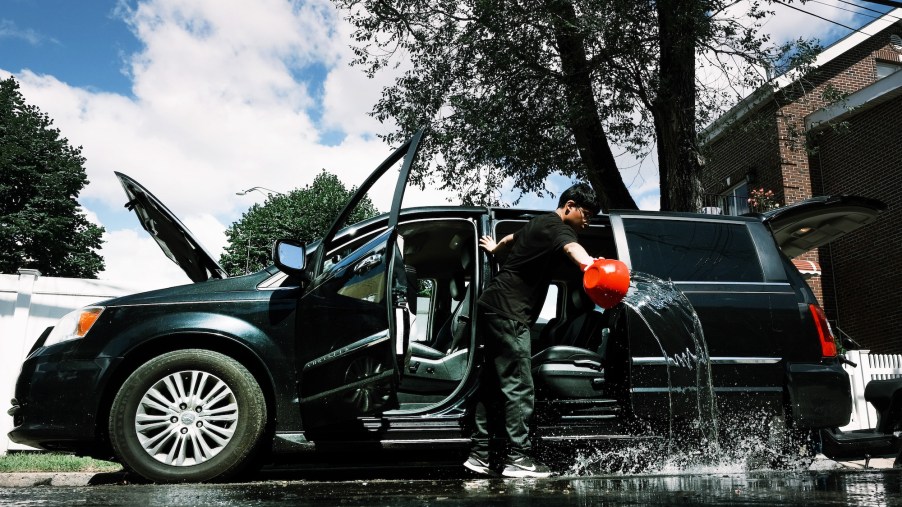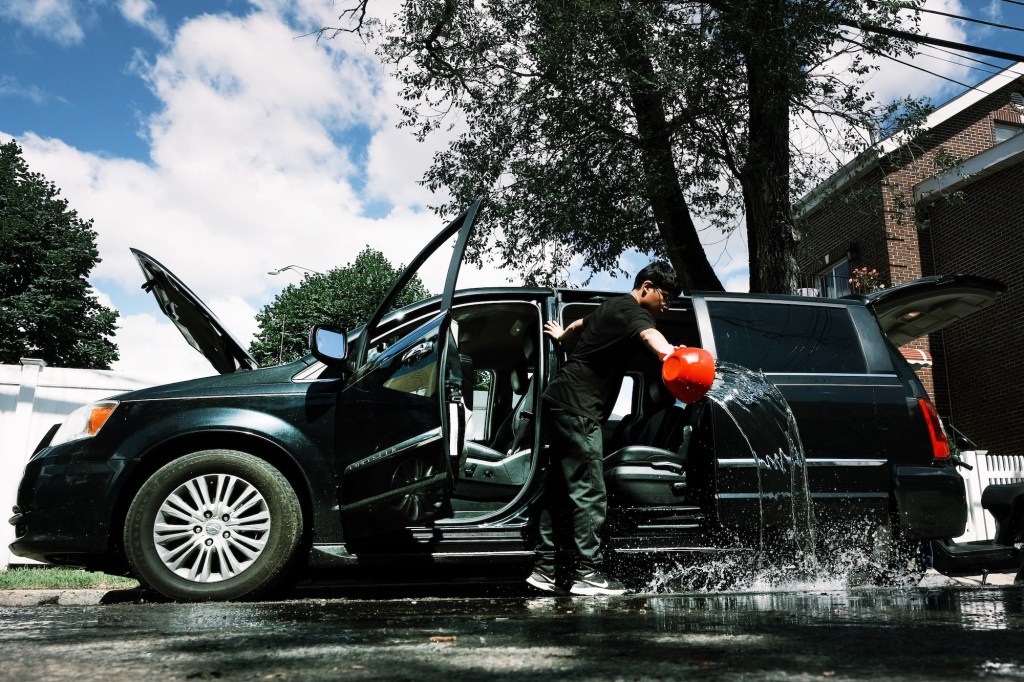
You Should Never Ignore These Signs of Flood Damage When Used Car Shopping
Car shopping has been more difficult this year due to various shortages causing availability issues. Some drivers affected by Hurricane Ida found their vehicles destroyed and had to find new cars on short notice. Unfortunately, some scammers have already tried to sell these flood-damaged cars on the used market.
Before the storm even touched down, at least 378,000 flooded cars were sold to consumers, CNBC reported. Even though Hurricane Ida has passed, car shoppers still need to be on the lookout for flood-damaged vehicles. Here are a few ways to ensure you don’t get a salvaged car in disguise.
A car with flood damage might these have musty, moldy, damp, or foggy parts

It’s hard to remove the musty odor that remains after a car has been flooded. It’s often caused by mildew generated by residual water, which might be hidden in obscure or hard-to-reach areas. Even with hard scrubbing and top-of-the-line cleaning supplies, someone might not be able to remove the smell once it sets in.
Fortunately, this means it’s also easy to spot because fraudsters won’t go to great lengths to remove it. Be wary of any air fresheners, which are often used to mask the stink. Run your hand over as much of the interior as you can, especially the carpets. If these feel overly damp or grimy, it might be due to flooding.
If the car’s seats are too damp after flooding, sometimes scammers will replace them with new ones. Look for any new stains, upholstery, or carpeting that doesn’t match the rest of the interior. It’s worth noting these components might have been replaced for other reasons. You should be able to find any legitimate material swaps in the car’s vehicle history report.
Two other signs of severe water damage are fogging and moisture beads in light fixtures. Closely examine the interior and exterior lights, instrument panel, and infotainment screen for these flaws.
Other signs of a flood-damaged car are dirt, rust, or brittle wiring
Any car that has been flooded is bound to accrue rust, especially around the door openings and trunk latches. Oftentimes, shady sellers will paint over these areas to conceal damage. Make sure the paint looks the same across the vehicle’s entire exterior.
Interior rust is common under the dashboard or on the foot pedals after a flood. Brittle wires under the dashboard can also indicate they have been submerged underwater for a long time. If all of these areas look clean, you can also pop the hood to look for rust under the lid.
If you feel comfortable, check under the car’s frame for hidden rust. Mud and silt can also become lodged under the seats, in the glove compartment, or even in the center console.
It’s also important to pay attention to the seller’s demeanor. If they seem hesitant or won’t allow you to inspect anything, they might be hiding something. They should also have no qualms about your starting the car, test-driving it, and asking questions about its performance.
CarFax experts also warn shoppers not to trust listings with rock-bottom prices, as tempting as they may be.
Get a vehicle history report, and ask a mechanic to inspect the car
In addition to the above tips to avoid buying a car with flood damage, CarFax encourages buyers to purchase a vehicle history report. It documents all the car’s service appointments and damage, either due to natural causes or accidents. A reputable seller should be able to provide one upon request.
CarFax also recommends that a trusted mechanic inspect the car before you buy it. A technician’s trained eye can catch anything you might have missed. It’s easy for scammers to take advantage of buyers because of the current inventory shortage, but a well-informed shopper can avoid getting duped.


